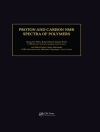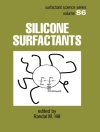A guide to applying the power of modern simulation tools to better drug design
Biomolecular Simulations in Structure-based Drug Discovery offers an up-to-date and comprehensive review of modern simulation tools and their applications in real-life drug discovery, for better and quicker results in structure-based drug design. The authors describe common tools used in the biomolecular simulation of drugs and their targets and offer an analysis of the accuracy of the predictions. They also show how to integrate modeling with other experimental data.
Filled with numerous case studies from different therapeutic fields, the book helps professionals to quickly adopt these new methods for their current projects. Experts from the pharmaceutical industry and academic institutions present real-life examples for important target classes such as GPCRs, ion channels and amyloids as well as for common challenges in structure-based drug discovery. Biomolecular Simulations in Structure-based Drug Discovery is an important resource that:
-Contains a review of the current generation of biomolecular simulation tools that have the robustness and speed that allows them to be used as routine tools by non-specialists
-Includes information on the novel methods and strategies for the modeling of drug-target interactions within the framework of real-life drug discovery and development
-Offers numerous illustrative case studies from a wide-range of therapeutic fields
-Presents an application-oriented reference that is ideal for those working in the various fields
Written for medicinal chemists, professionals in the pharmaceutical industry, and pharmaceutical chemists, Biomolecular Simulations in Structure-based Drug Discovery is a comprehensive resource to modern simulation tools that complement and have the potential to complement or replace laboratory assays for better results in drug design.
Tabella dei contenuti
Foreword xiii
Part I Principles 1
1 Predictive Power of Biomolecular Simulations 3
Vojtech Spiwok
1.1 Design of Biomolecular Simulations 4
1.2 Collective Variables and Trajectory Clustering 6
1.3 Accuracy of Biomolecular Simulations 8
1.4 Sampling 10
1.5 Binding Free Energy 14
1.6 Convergence of Free Energy Estimates 16
1.7 Future Outlook 20
References 21
2 Molecular Dynamics–Based Approaches Describing Protein Binding 29
Andrea Spitaleri and Walter Rocchia
2.1 Introduction 29
2.1.1 Protein Binding: Molecular Dynamics Versus Docking 30
2.1.2 Molecular Dynamics –The Current State of the Art 31
2.2 Protein–Protein Binding 32
2.3 Protein–Peptide Binding 34
2.4 Protein–Ligand Binding 36
2.5 Future Directions 38
2.5.1 Modeling of Cation-p Interactions 38
2.6 Grand Challenges 39
References 39
Part II Advanced Algorithms 43
3 Modeling Ligand–Target Binding with Enhanced Sampling Simulations 45
Federico Comitani and Francesco L. Gervasio
3.1 Introduction 45
3.2 The Limits of Molecular Dynamics 46
3.3 Tempering Methods 47
3.4 Multiple Replica Methods 48
3.5 Endpoint Methods 50
3.5.1 Alchemical Methods 50
3.6 Collective Variable-Based Methods 51
3.6.1 Metadynamics 52
3.7 Binding Kinetics 57
3.8 Conclusions 59
References 60
4 Markov State Models in Drug Design 67
Bettina G. Keller, Stevan Aleksic, and Luca Donati
4.1 Introduction 67
4.2 Markov State Models 68
4.2.1 MD Simulations 68
4.2.2 The Molecular Ensemble 69
4.2.3 The Propagator 69
4.2.4 The Dominant Eigenspace 70
4.2.5 The Markov State Model 72
4.3 Microstates 75
4.4 Long-Lived Conformations 77
4.5 Transition Paths 79
4.6 Outlook 81
Acknowledgments 82
References 82
5 Monte Carlo Techniques for Drug Design: The Success Case of PELE 87
Joan F. Gilabert, Daniel Lecina, Jorge Estrada, and Victor Guallar
5.1 Introduction 87
5.1.1 First Applications 88
5.1.2 Free Energy Calculations 88
5.1.3 Optimization 88
5.1.4 MC and MD Combinations 89
5.2 The PELE Method 90
5.2.1 MC Sampling Procedure 91
5.2.2 Ligand Perturbation 91
5.2.3 Receptor Perturbation 91
5.2.4 Side-Chain Adjustment 93
5.2.5 Minimization 93
5.2.6 Coordinate Exploration 93
5.2.7 Energy Function 94
5.3 Examples of PELE’s Applications 94
5.3.1 Mapping Protein Ligand and Biomedical Studies 94
5.3.2 Enzyme Characterization 96
Acknowledgments 97
References 97
6 Understanding the Structure and Dynamics of Peptides and Proteins Through the Lens of Network Science 105
Mathieu Fossepre, Laurence Leherte, Aatto Laaksonen, and Daniel P. Vercauteren
6.1 Insight into the Rise of Network Science 105
6.2 Networks of Protein Structures: Topological Features and Applications 107
6.2.1 Topological Features and Analysis of Networks: A Brief Overview 107
6.2.2 Centrality Measures and Protein Structures 110
6.2.3 Software 114
6.3 Networks of Protein Dynamics: Merging Molecular Simulation Methods and Network Theory 117
6.3.1 Molecular Simulations: A Brief Overview 117
6.3.2 How Can Network Science Help in the Analysis of Molecular Simulations? 118
6.3.3 Software 119
6.4 Coarse-Graining and Elastic Network Models: Understanding Protein Dynamics with Networks 120
6.4.1 Coarse-Graining: A Brief Overview 120
6.4.2 Elastic Network Models: General Principles 123
6.4.3 Elastic Network Models: The Design of Residue Interaction Networks 124
6.5 Network Modularization to Understand Protein Structure and Function 128
6.5.1 Modularization of Residue Interaction Networks 128
6.5.2 Toward the Design of Meso scale Protein Models with Network Modularization Techniques 130
6.6 Laboratory Contributions in the Field of Network Science 131
6.6.1 Graph Reduction of Three-Dimensional Molecular Fields of Peptides and Proteins 132
6.6.2 Design of Multi scale Elastic Network Models to Study Protein Dynamics 135
6.7 Conclusions and Perspectives 140
Acknowledgments 142
References 142
Part III Applications and Success Stories 163
7 From Computers to Bedside: Computational Chemistry Contributing to FDA Approval 165
Christina Athanasiou and Zoe Cournia
7.1 Introduction 165
7.2 Rationalizing the Drug Discovery Process: Early Days 166
7.2.1 Captopril (Capoten®) 167
7.2.2 Saquinavir (Invirase®) 167
7.2.3 Ritonavir (Norvir®) 168
7.3 Use of Computer-Aided Methods in the Drug Discovery Process 168
7.3.1 Ligand-Based Methods 169
7.3.1.1 Overlay of Structures 169
7.3.1.2 Pharmacophore Modeling 171
7.3.1.3 Quantitative Structure–Activity Relationships (QSAR) 172
7.3.2 Structure-Based Methods 173
7.3.2.1 Molecular Docking – Virtual Screening 175
7.3.2.2 Flexible Receptor Molecular Docking 179
7.3.2.3 Molecular Dynamics Simulations 179
7.3.2.4 De Novo Drug Design 180
7.3.2.5 Protein Structure Prediction 181
7.3.2.6 Rucaparib (Zepatier®) 184
7.3.3 Ab Initio Quantum Chemical Methods 185
7.4 Future Outlook 186
References 190
8 Application of Biomolecular Simulations to G Protein–Coupled Receptors (GPCRs) 205
Mariona Torrens-Fontanals, Tomasz M. Stepniewski, Ismael Rodriguez-Espigares, and Jana Selent
8.1 Introduction 205
8.2 MD Simulations for Studying the Conformational Plasticity of GPCRs 207
8.2.1 Challenges in GPCR Simulations: The Sampling Problem and Simulation Timescales 208
8.2.2 Making Sense Out of Simulation Data 209
8.3 Application of MD Simulations to GPCR Drug Design:Why Should We Use MD? 210
8.4 Evolution of MD Timescales 214
8.5 Sharing MD Data via a Public Database 216
8.6 Conclusions and Perspectives 216
Acknowledgments 217
References 217
9 Molecular Dynamics Applications to GPCR Ligand Design 225
Andrea Bortolato, Francesca Deflorian, Giuseppe Deganutti, Davide Sabbadin, Stefano Moro, and Jonathan S.Mason
9.1 Introduction 225
9.2 The Role of Water in GPCR Structure-Based Ligand Design 226
9.2.1 Water Map and Water FLAP 228
9.3 Ligand-Binding Free Energy 230
9.4 Ligand-Binding Kinetics 233
9.4.1 Supervised Molecular Dynamics (Su MD) 235
9.4.2 Adiabatic Bias Metadynamics 238
9.5 Conclusion 241
References 242
10 Ion Channel Simulations 247
Saurabh Pandey, Daniel Bonhenry, and Rudiger H. Ettrich
10.1 Introduction 247
10.2 Overview of Computational Methods Applied to Study Ion Channels 248
10.2.1 Homology Modeling 248
10.2.2 All-atom Molecular Dynamics Simulations 249
10.2.2.1 Force Fields 250
10.2.3 Methods for Calculation of Free Energy 251
10.2.3.1 Free Energy Perturbation 251
10.2.3.2 Umbrella Sampling 251
10.2.3.3 Metadynamics 252
10.2.3.4 Adaptive Biased Force Method 252
10.3 Properties of Ion Channels Studied by Computational Modeling 253
10.3.1 A Refined Atomic Scale Model of the Saccharomyces cerevisiae K+-translocation Protein Trk1p 253
10.3.2 Homology Modeling, Docking, and Mutagenesis Studies of Human Melatonin Receptors 254
10.3.3 Selectivity and Permeation in Voltage-Gated Sodium (Na V) Channels 254
10.3.4 Study of Ion Conduction Mechanism, Favorable Translocation Path, and Ion Selectivity in Kcs A Using Free Energy Perturbation and Umbrella Sampling 257
10.3.5 Ion Conductance Calculations 260
10.3.5.1 Voltage-Dependent Anion Channel (VDAC) 261
10.3.5.2 Calculation of Ion Conduction in Low-Conductance GLIC Channel 261
10.3.6 Transient Receptor Potential (TRP) Channels 263
10.4 Free Energy Methods Applied to Channels Bearing Hydrophobic Gates 264
10.5 Conclusion 270
Acknowledgments 271
References 271
11 Understanding Allostery to Design New Drugs 281
Giulia Morra and Giorgio Colombo
11.1 Introduction 281
11.2 Protein Allostery: Basic Concepts and Theoretical Framework 282
11.2.1 The Classic View of Allostery 283
11.2.2 The Thermodynamic Two-State Model of Allostery 283
11.2.3 From Thermodynamics to Protein Structure and Dynamics 285
11.2.4 Entropy in Allostery: The Ensemble Allostery Model 287
11.3 Exploiting Allostery in Drug Discovery and Design 288
11.3.1 Computational Prediction of Allosteric Behavior and Application to Drug Discovery 288
11.3.2 Identification of Allosteric Binding Sites Through Structural and Dynamic approaches 289
11.4 Chaperones 291
11.5 Kinases 293
11.6 GPCRs 294
11.7 Conclusions 296
References 296
12 Structure and Stability of Amyloid Protofibrils of Polyglutamine and Polyasparagine from Molecular Dynamics Simulations 301
Viet Hoang Man, Yuan Zhang, Christopher Roland, and Celeste Sagui
12.1 Introduction 301
12.2 Polyglutamine Protofibrils and Aggregates 303
12.2.1 Investigations of Oligomeric Q8 Structures 303
12.2.2 Time Evolution, Steric Zippers, and Crystal Structures of 4 × 4 Q8Aggregates 306
12.2.3 Monomeric Q40 Protofibrils 308
12.3 Amyloid Models of Asparagine (N) and Glutamine(Q) 311
12.3.1 Initial Structures 313
12.3.2 Monomeric Poly Q βHairpins Are More Stable than Poly N Hairpins 314
12.3.3 N-rich Oligomers Are Most Stable in Class 1 Steric Zippers with 2-by-2 Interdigitation 315
12.3.4 Poly Q Oligomers Are Most Stable in Antiparallel Stranded β Sheets with 1-by-1 Steric Zippers 316
12.3.5 Poly Q Structures Show Higher Stability than Most Stable Poly N Structures 317
12.3.6 Thermodynamic Considerations of Aggregate Formation 318
12.4 Summary 319
Acknowledgments 320
References 320
13 Using Biomolecular Simulations to Target Cdc34 in Cancer 325
Miriam Di Marco, Matteo Lambrughi, and Elena Papaleo
13.1 Background 325
13.2 Families of E2 Enzymes 327
13.3 Cdc34 Protein Sequence and Structure 328
13.4 Cdc34 Heterogeneous Conformational Ensemble in Solution 329
13.5 Long-Range Communication in Family 3 Enzymes: A Structural Path from the Ub-Binding Site to the E3 Recognition Site 330
13.6 Cdc34 Modulation by Phosphorylation: From Phenotype to Structure 331
13.7 The Dual Role of the Acidic Loop of Cdc34: Regulator of Activity and Interface for E3 Binding 332
13.8 Different Strategies to Target Cdc34 with Small Molecules 333
13.9 Conclusions and Perspectives 334
Acknowledgments 336
References 336
Index 343
Circa l’autore
Francesco Luigi Gervasio holds a chair in Biomolecular Modelling and is professor of Chemistry and professor of Structural and Molecular Biology at University College London (UK).
Vojtech Spiwok is a researcher of University of Chemistry and Technology, Prague (Czech Republic). He has authored numerous scientific publications on biomolecular simulations with a special emphasis on development and application of enhanced sampling techniques.












